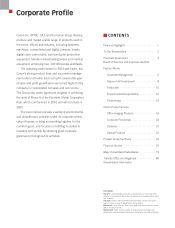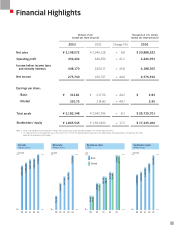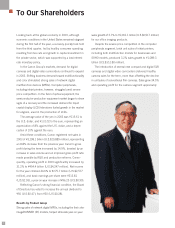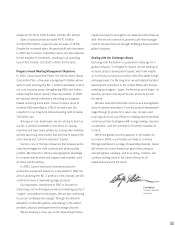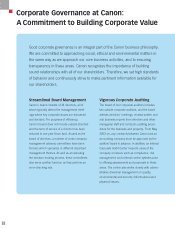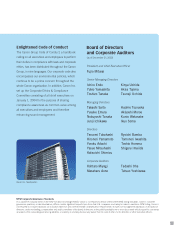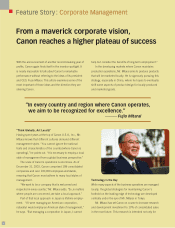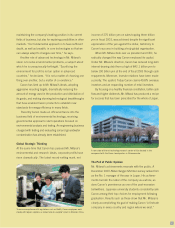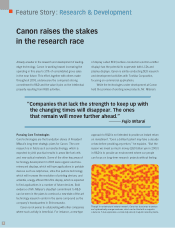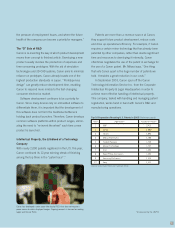Canon 2003 Annual Report Download - page 12
Download and view the complete annual report
Please find page 12 of the 2003 Canon annual report below. You can navigate through the pages in the report by either clicking on the pages listed below, or by using the keyword search tool below to find specific information within the annual report.
Feature Story : Production
“With factory automation and other production
techniques, we can manufacture certain goods
at a lower cost in Japan.”
———
Fujio Mitarai
Building factories at home, Canon finds
new ways to extend its global reach
Canon’s decision last year to open a new digital camera
production facility in Oita, Kyushu (Japan) raised some
eyebrows. After all, conventional wisdom for some time
now has been to move factories overseas, preferably to
Southeast Asia, where labor costs are low.
Canon’s president and CEO Fujio Mitarai defends
Canon’s maverick move: “If we switch factories each time
a place with lower labor costs is found, all the investment in
equipment is wasted. Instead, we should use our strengths
in production, and manufacture products more cheaply
than they could be manufactured in locations where the
cost of labor is lower.”
As a good example of this philosophy, the new Oita
plant, which will start operations in 2006, will produce up
to six million units of high-end digital cameras and digital
video camcorders annually.
Cell Production and Beyond
The production workers at the new Oita plant will work in
a cell production environment, a method that gives a small
number of workers, or in some cases a single worker,
responsibility for the final assembly of a product from
subassemblies. Canon reports that cell production has led
to considerable gains in productivity and product quality,
enabling over 12 miles of conveyor belts to be retired
since 1998.
While Mr. Mitarai says “cell production is a primary
reason for Canon’s profitable status in recent years,” he
believes that “the process is reaching its limits.” Looking
ahead, Canon is investing heavily in automation technology
that will be integrated with cell production and Canon’s
increasingly effective supply chain management (SCM)
systems to achieve higher levels of productivity. Overall,
Canon’s production reform activities since 1998 have
enabled the company to reallocate over 215 acres of facility
space, resulting in an estimated elimination of 65,600 tons
of CO
2
emissions.
The cell production environment employed at Canon’s factory in Vietnam draws
on the strong traditions of Vietnamese craftsmanship not only for achieving
high production standards, but also for making some production equipment.
10


